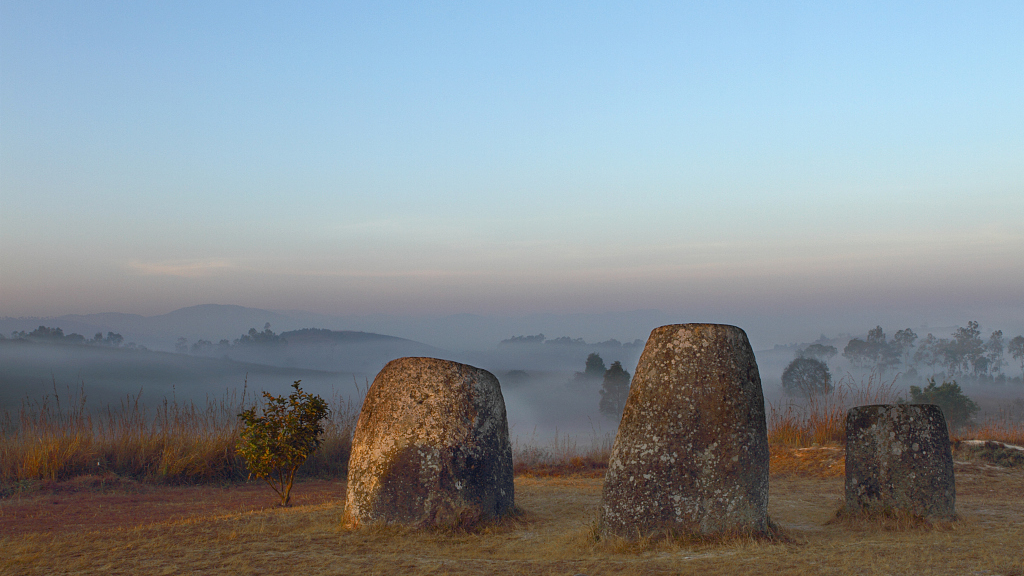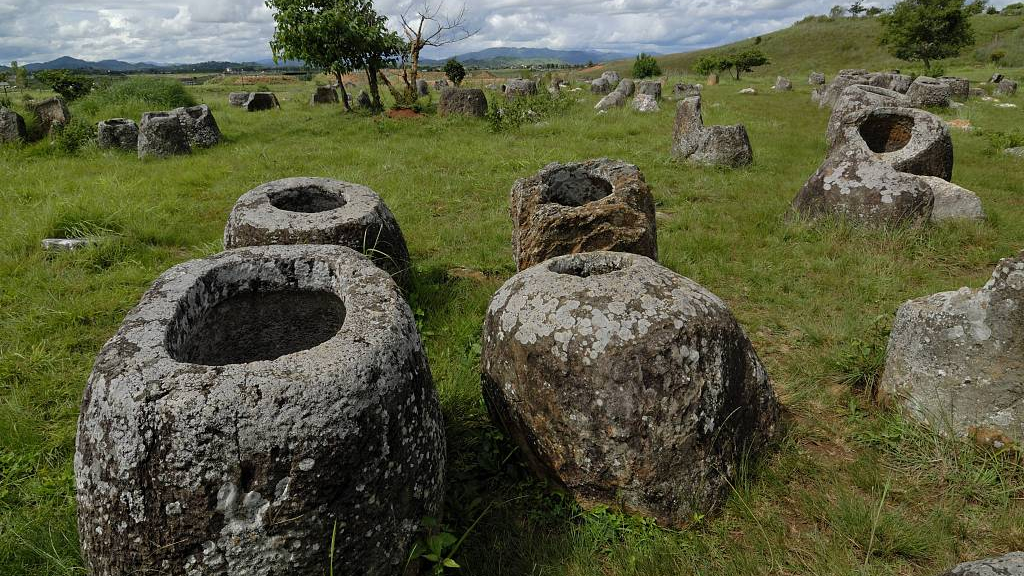

View of the Plain of Jars. /VCG Photo
UNESCO has acknowledged the Plain of Jars, a megalithic archaeological landscape in Xieng Khuang Plateau in Laos as a World Heritage site, Lao Minister of Information, Culture and Tourism Bosengkham Vongdara told a press conference on Thursday.
Bosengkham expressed the highest appreciation and acknowledgment to the Lao government for contributing and supporting the inscription of the megalithic jar sites, which lie some 180 km northeast of the Lao capital Vientiane.
The Plain of Jars has become the country's third UNESCO World Heritage site, after Luang Prabang in 1995, and pre-Angkor Vat Phou (Champasak province) in southern Laos in 2002.
The Plain of Jars gets its name from more than 2,100 tubular-shaped megalithic stone jars used for funerary practices in the Iron Age, according to UNESCO.
This serial property of 15 components contains 1,325 of these large carved stone jars, stone discs (possibly lids for the jars), secondary burials, grave markers, quarries, manufacturing sites, grave goods and other features.

Landscape of the Plain of Jars in Laos has been acknowledged as a World Heritage site. /VCG Photo
Located on hill slopes and spurs surrounding the central plateau, the jars are large and well-crafted and required technological skill to produce and move from the quarry location to the funerary sites.
The jars and associated elements are the most prominent evidence of the Iron Age civilization that made and used them and about which little is known. The sites are dated from between 500 BCE and 500 CE (and possibly up to as late as 800 CE).
The jars and associated archaeological features provide evidence of these ancient cultural practices, including associated social hierarchies.
The plain of jars is located at a historical crossroads between two major cultural systems of Iron Age southeast Asia, the Mun-Mekong system and the Red River/Gulf of Tonkin (Beibu Wan) system. Because the area is one that facilitated movement through the region enabling trade and cultural exchange, the distribution of the jars sites is thought to be associated with overland routes, the Lao News Agency KPL said on Friday.
“We will submit the first application for a world heritage status for Hin Nam Nor and we hope to be able to submit the final application in 2020,” said Bosengkham, adding that the Lao government is preparing for a new listed site.

Copyright © 2018 CGTN. Beijing ICP prepared NO.16065310-3
Copyright © 2018 CGTN. Beijing ICP prepared NO.16065310-3